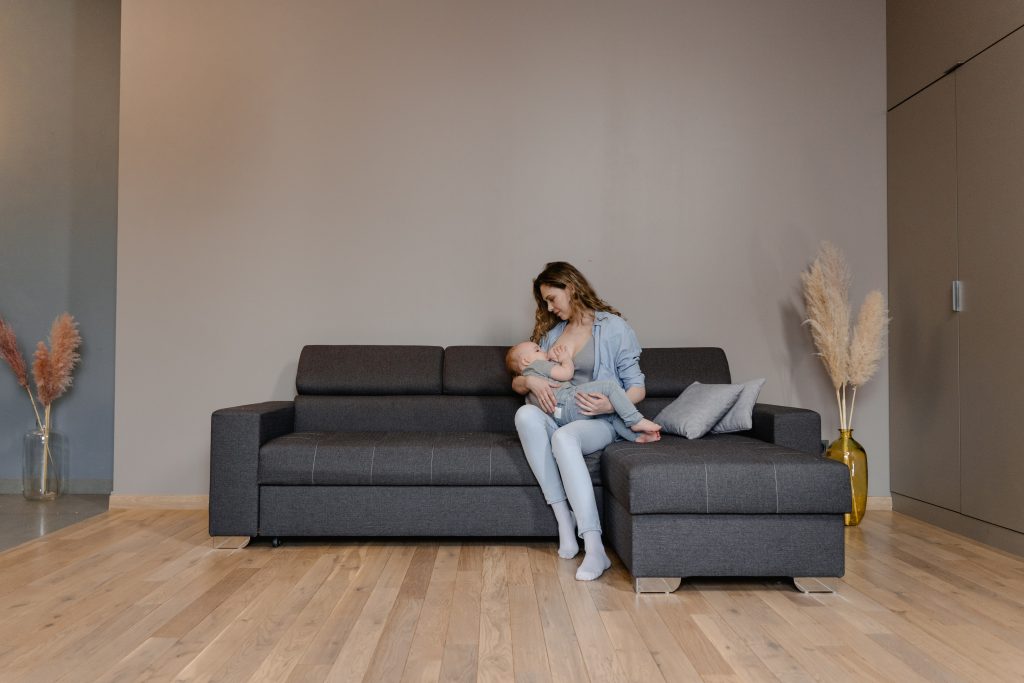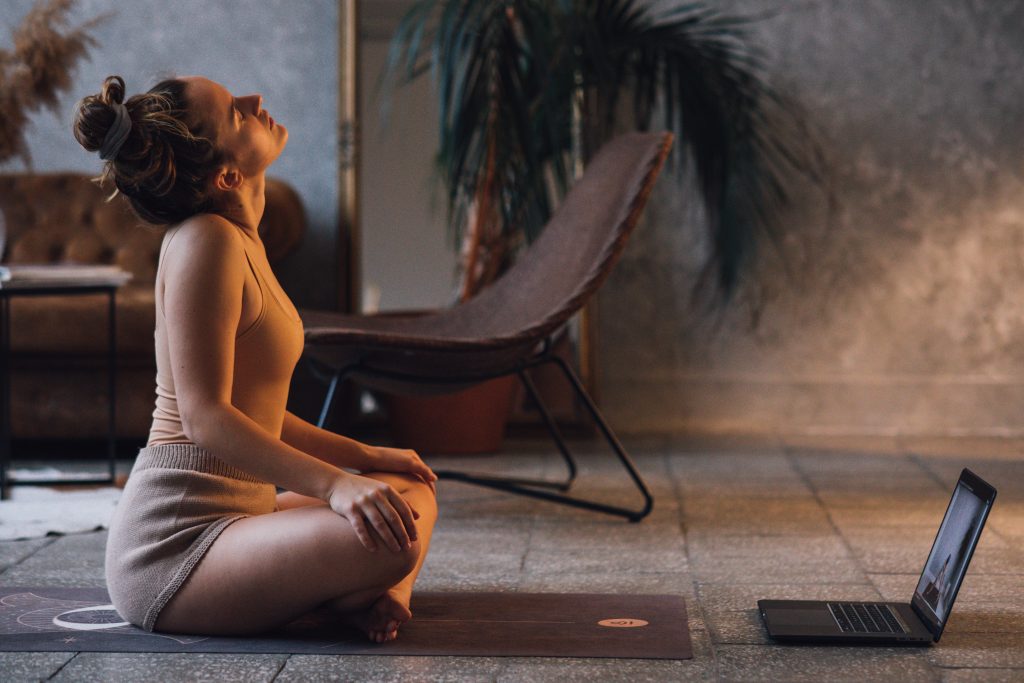Discover the yoga and Pilates moves that new moms should avoid postpartum.
Are There Yoga or Pilates Moves to Avoid Postpartum?
Congratulations on bringing a beautiful child into this world! Now that you’re a proud mama, you might be wondering about getting back into your pre-pregnancy exercise routine. Yoga and Pilates are two popular choices for postpartum workouts, but you may be wondering if there are any moves you should avoid. Let’s dive into the topic and find out!
Understanding Postpartum Body Changes

Before we get into the nitty-gritty of yoga and Pilates, let’s take a moment to understand the miraculous changes your body went through during pregnancy and childbirth. It’s truly amazing how your body adapted to grow and nurture your little bundle of joy!
During pregnancy, your body undergoes a multitude of changes to accommodate the growing life inside you. Your uterus expands to make room for the developing fetus, and your blood volume increases to supply oxygen and nutrients to both you and your baby. As your pregnancy progresses, you may have noticed changes in your breasts, as they prepare for breastfeeding.
After childbirth, your body continues to undergo significant changes as it transitions back to its pre-pregnancy state. Your uterus, which expanded to accommodate the growing fetus, begins to shrink back to its original size. This process, known as involution, can take several weeks to complete. Additionally, your abdominal muscles may be weaker and stretched, and you might have looser joints due to the hormone relaxin that was released during pregnancy.
Another area that is often affected postpartum is the pelvic floor. These muscles, which support your internal organs and play a crucial role in controlling continence, can become weakened during pregnancy and childbirth. It’s important to be aware of this and take steps to strengthen and rehabilitate your pelvic floor muscles.
Now, let’s delve into the physical changes you may experience after childbirth in more detail:
Physical Changes After Childbirth
Postpartum, your body experiences several physical changes. Your uterus begins to shrink back to its pre-pregnancy size, gradually returning to its original position within your pelvis. This process is aided by the release of the hormone oxytocin, which causes the uterus to contract.
Your abdominal muscles, particularly the rectus abdominis muscles, may be stretched and weakened after pregnancy. This can result in a condition known as diastasis recti, where the abdominal muscles separate along the midline. It’s important to be mindful of this and avoid exercises that can worsen the separation.
In addition to changes in the uterus and abdominal muscles, you may also experience changes in your joints. The hormone relaxin, which is released during pregnancy to loosen the ligaments in preparation for childbirth, can still be present in your body postpartum. This can make your joints more flexible and prone to injury, so it’s important to be cautious and avoid overstretching.
Lastly, let’s not forget about the pelvic floor muscles. These muscles, which have been stretched and strained during pregnancy and childbirth, may be weakened. This can lead to issues such as urinary incontinence or pelvic organ prolapse. It’s crucial to prioritize pelvic floor exercises to regain strength and function in this area.
Now that we’ve covered the physical changes, let’s explore the emotional and hormonal changes that occur after childbirth:
Emotional and Hormonal Changes Postpartum
After giving birth, your body goes through a significant hormonal shift as it adjusts to the new normal. The sudden drop in pregnancy hormones, such as estrogen and progesterone, can lead to mood swings and feelings of overwhelm. This period, often referred to as the “baby blues,” is a common experience for many new mothers.
Exercise, like yoga and Pilates, can be a wonderful tool for managing these emotional and hormonal changes. Physical activity releases endorphins, the feel-good hormones, which can help boost your mood and promote overall well-being. Engaging in regular exercise can also provide a sense of empowerment and control during a time of significant change.
However, it’s crucial to approach exercise with caution to avoid exacerbating any emotional and hormonal imbalances. It’s important to listen to your body and give yourself permission to rest when needed. Remember, your body has just gone through an incredible journey, and it deserves time to heal and recover.
In conclusion, understanding the physical, emotional, and hormonal changes that occur after childbirth is essential when embarking on a postpartum exercise routine. By being aware of these changes, you can make informed choices and tailor your workouts to support your body’s recovery and overall well-being.
The Importance of Safe Exercise Postpartum
Now that we have a better understanding of the changes your body goes through postpartum, let’s explore the importance of safe exercise during this time. Engaging in appropriate physical activity can have numerous benefits for your physical and mental well-being.
After giving birth, your body undergoes significant changes. Your abdominal muscles and pelvic floor may be weakened, and your joints may still be recovering from the hormonal changes that occurred during pregnancy. Safe exercise can help address these changes and promote a healthy recovery.
Benefits of Postpartum Exercise
Regular exercise can help strengthen your muscles, improve your posture, and increase your energy levels. It can also aid in weight loss, reduce the risk of postpartum depression, and promote better sleep. Let’s not forget the confidence boost it can bring as you regain strength and tone your body!
Exercise has been shown to have a positive impact on mental health. The release of endorphins during physical activity can help alleviate symptoms of postpartum depression and anxiety. Additionally, engaging in exercise can provide a much-needed break from the demands of motherhood, allowing you to focus on yourself and your well-being.
Exercise can also be a great way to connect with other moms, whether it’s through joining a postpartum yoga class or hitting the gym with fellow mamas. Feeling supported and understood by others going through similar experiences can make a world of difference during this transitional phase of motherhood.
Risks of Inappropriate Exercise Postpartum
While exercise is beneficial, it’s essential to acknowledge the risks of inappropriate exercise postpartum. Certain moves can strain weakened abdominal muscles, cause pelvic floor issues, or put unnecessary pressure on healing tissues. It’s crucial to choose exercises that are safe, effective, and suitable for your body’s healing process.
Consulting with a healthcare professional, such as a pelvic floor physiotherapist or a postpartum fitness specialist, can help you determine the best exercises for your individual needs. They can provide guidance on proper form, intensity, and progression to ensure that you’re engaging in safe and effective workouts.
Remember, every woman’s postpartum journey is unique, and what works for one person may not work for another. It’s important to listen to your body and make adjustments as needed. If something doesn’t feel right or causes discomfort, it’s best to stop and seek professional advice.
Yoga Moves to Approach with Caution Postpartum
Yoga is a fantastic way to connect your mind, body, and soul. It offers numerous benefits for postpartum recovery, including improved strength, flexibility, and mental well-being. However, it’s important to approach certain poses with caution and consider modifying them to ensure a safe practice.
Potential Risks of Certain Yoga Poses
While yoga can be incredibly beneficial, there are a few poses that may not be suitable for your postpartum journey. Inversions, such as headstands and shoulder stands, are best avoided in the immediate postpartum period. These poses increase pressure on the pelvic area and can strain weakened core muscles, potentially leading to pelvic organ prolapse.
Deep twists, like full spinal twists, can also be risky as they create torque on the abdominal muscles and pelvic floor. It’s crucial to prioritize stability and avoid overstretching these areas, especially during the early stages of postpartum recovery.
Safe Modifications for Postpartum Yoga
Fortunately, there are plenty of safe modifications you can make to your yoga practice to accommodate your postpartum body and ensure a gentle and effective workout.
Gentle forward bends, such as child’s pose or seated forward fold, can provide a nurturing stretch for your back and hamstrings. These poses help release tension in the lower back and promote relaxation, which is essential for postpartum recovery.
Another great modification is to use props, such as blocks or bolsters, to provide additional support and stability. This can be particularly helpful in poses like low lunges or seated twists, where you want to ensure proper alignment without straining your core. Props allow you to find a comfortable and safe position, allowing you to fully enjoy the benefits of each pose without risking injury.
Additionally, focusing on gentle and controlled movements can help you build strength and stability without putting excessive strain on your body. This is especially important during the postpartum period when your body is still healing and adjusting to the changes brought about by pregnancy and childbirth.
Remember, every postpartum journey is unique, and it’s essential to listen to your body. If a pose feels uncomfortable or causes any pain or discomfort, it’s best to modify or skip it altogether. Consulting with a qualified yoga instructor who specializes in postpartum yoga can also provide valuable guidance and ensure a safe and effective practice.
Pilates Exercises to Avoid After Childbirth
Pilates is renowned for its focus on core strength, flexibility, and overall body awareness. However, there are a few exercises that may not be the best fit for your postpartum journey. Let’s take a look at the Pilates moves you should avoid and some safer alternatives.
Understanding the Risks of Certain Pilates Moves
Crunches or sit-ups, the golden standard for strong abs, may not be the best choice right after giving birth. These moves can strain weakened abdominal muscles and potentially worsen diastasis recti, a condition where the abdominal muscles separate.
Exercises that involve deep backbends, like the Swan or the Seal, can also put unnecessary stress on your healing pelvic floor and lower back. It’s crucial to focus on stability and gradual strengthening rather than pushing your body too hard, too soon.
Safe Pilates Alternatives for Postpartum Women
Instead of jumping into intense abdominal exercises, opt for gentle, pelvic floor-friendly moves like pelvic tilts or transverse abdominis activation exercises. These will help you rebuild core strength while prioritizing the stability and alignment of your postpartum body.
Modified versions of exercises like the Bridge or the Hundred can provide a fantastic full-body workout while still respecting your body’s healing process. Remember, slow and steady wins the race when it comes to postpartum exercise!
Tips for Safely Returning to Yoga and Pilates Postpartum
Now that you have a good understanding of what moves to approach with caution, let’s explore some valuable tips for safely returning to your yoga and Pilates practice postpartum.

Listening to Your Body’s Signals
Your body is unique, and it’s essential to listen to its signals when engaging in any physical activity. Pay attention to any discomfort, pain, or strain. If a move doesn’t feel right, modify or skip it altogether.
Be patient with yourself and give your body the grace and time it needs to heal. Remember, your postpartum journey is a marathon, not a sprint!
The Role of Professional Guidance
Consider practicing under the guidance of a trained postpartum yoga or Pilates instructor. They can provide personalized modifications and ensure that you’re performing moves that are appropriate for your body’s healing stage.
If you’re unsure about where to find a qualified instructor or need assistance finding a class that caters specifically to postpartum women, reach out to local support groups or healthcare professionals who can point you in the right direction.
Remember, mama, taking care of yourself is crucial during this beautiful yet demanding journey of motherhood. With a little caution, modification, and professional guidance, yoga and Pilates can be wonderful tools to support your physical and mental well-being postpartum. Enjoy the journey, listen to your body, and be proud of the incredible mama that you are!



